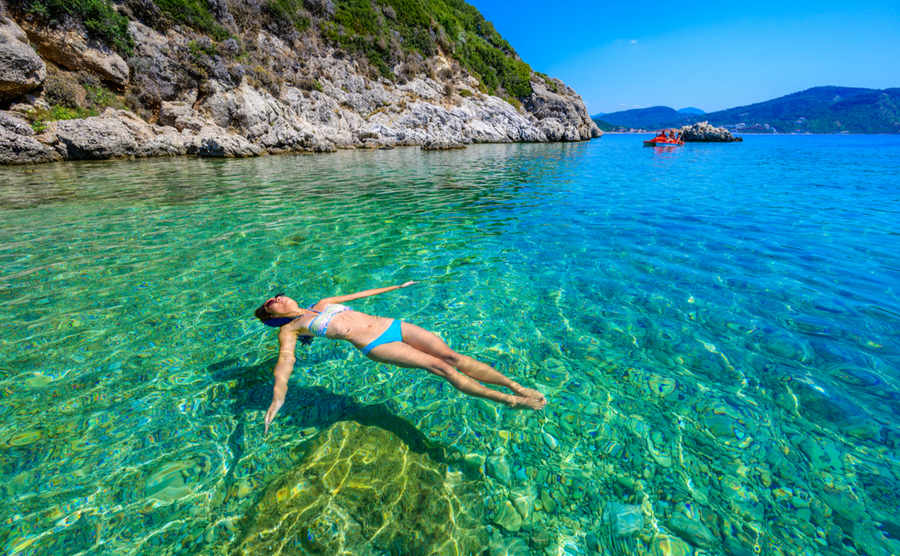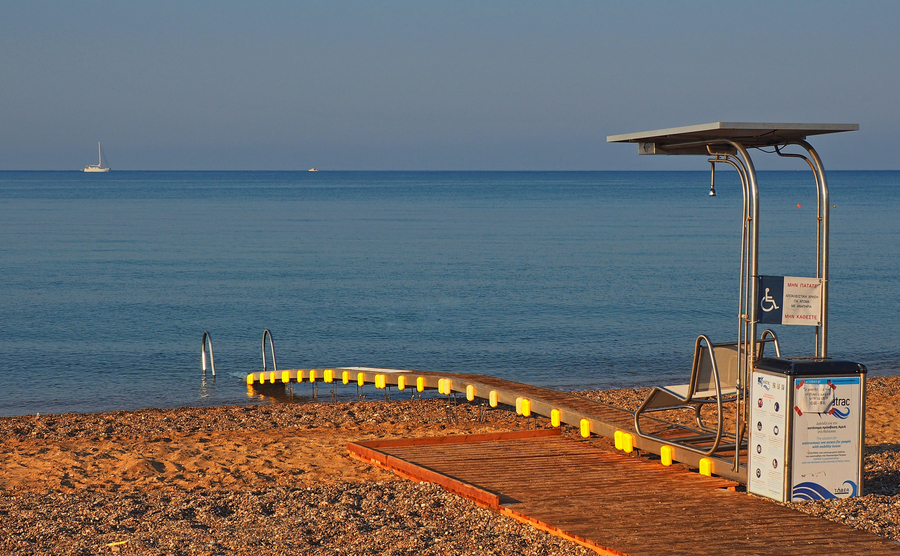Greece is set to make 287 beaches more accessible for wheelchair users, with 220 of those intended to be ready this summer.
Greece is a hugely popular destination with tourists, welcoming more than 33 million each year. Last year, nearly 4.5 million Britons were registered at Greek entry points.
Unsurprisingly, many of us chose to holiday – or even purchase a home – in Greece because of its beautiful waters. You might love showing off how powerful a swimmer you are. Or having a chit-chat in the waves with a friend (until a big one knocks one or both of you over). Or playing with a baby in the shallow parts. Now, Greece is on a mission to make sure that even more people can enjoy their waters by making their beaches more accessible for those with mobility issues.
Greece’s tourism minister Vassilis Kikilias has announced a new initiative to make 287 beaches fully accessible for those with mobility issues. 220 beaches should be ready by summer 2023. Over 100 beaches have already been transformed. The project is rumoured to cost €15 million and will be partially funded by the European Union. It will involve the installation of a SEATRAC system.
Speaking about the project, Vassilis Kikilias said, “Equal access to the sea is an inalienable human right”. SEATRAC has changed the experience for disabled, elderly, pregnant people, and those with temporary injuries. SEATRAC is completely free to use.
Find homes in Greece via our property portal.
How does SEATRAC work?
SEATRAC is a fully remote-control fixed track mechanism. The user shifts from their wheelchair to the seat and then presses a button to make the seat move along the track and into the sea. At the end of the track, you disembark into the sea. Once you are finished swimming, you can use the handrails to return to the seat and then use the remote control to return back to where you started. There is even the option to have a shower for a rinse. Then you can return to your wheelchair.
Greece’s beaches will become more accessible in other ways too
It is not just SEATRAC, Greece is creating “integrated tourist accessible sea destinations” in a number of other ways too: more parking, bathroom and changing facilities, ramps and corridors to sun loungers, areas with more shade. Their website, Accessible Beaches sets out their aims, tracks progress and has a list of beaches that already have SEATRAC installed. For example, there are accessible beach(es) in: Mainland Greece, the Peloponnese, Dodecanese, and Crete. You can also request to have SEATRAC installed in your favourite beach.
Additionally, on their own website, SEATRAC, have a list of where they are installed. They also include information about parking, shade, changing rooms, toilet and shower access, and the day’s weather at each beach. If you or a loved one do have mobility issues, it might be worth noting these beaches down during your property search and finding homes nearby. SEATRAC is also installed in beaches in Italy, Lativa and Cyprus.














